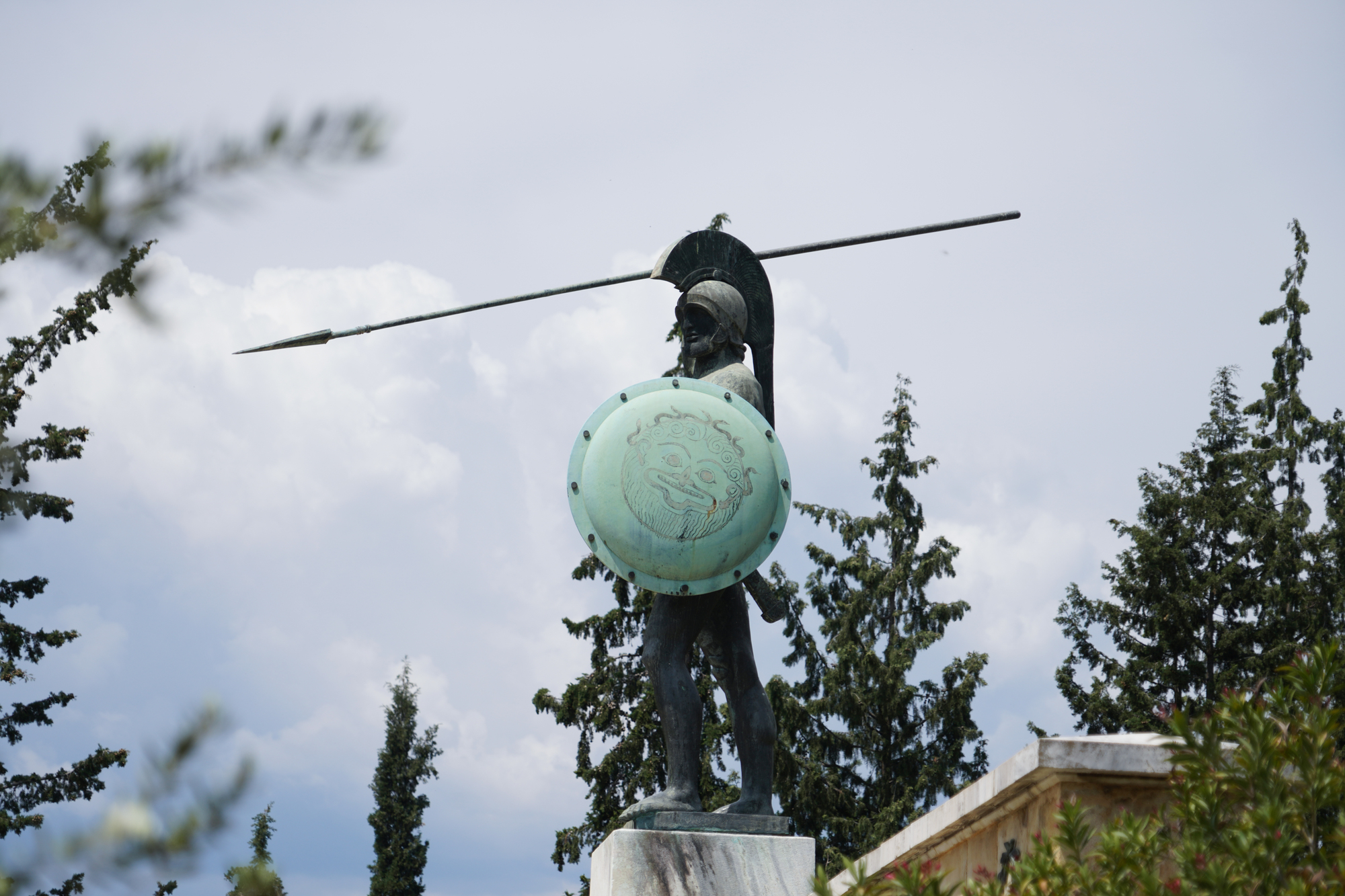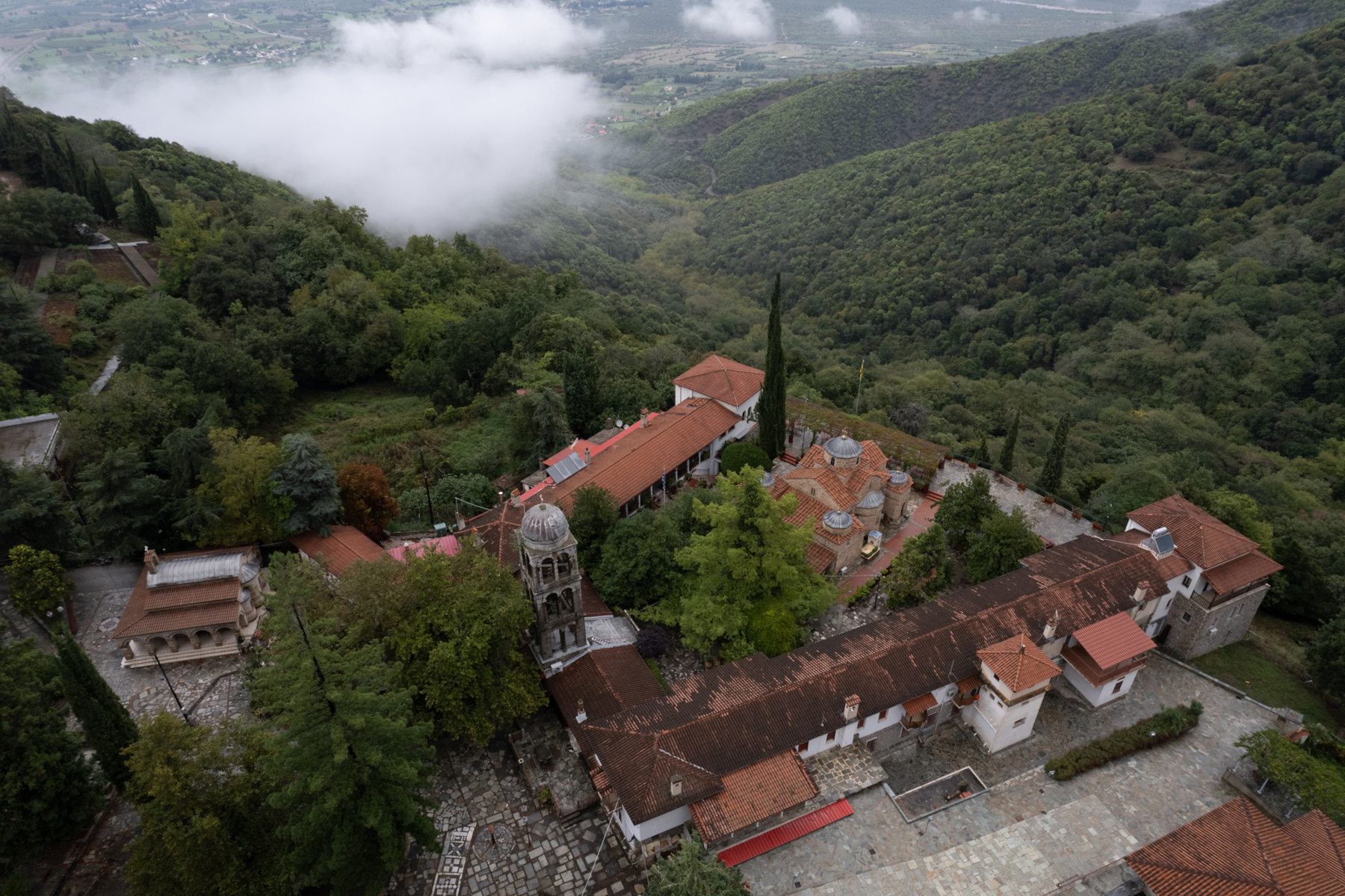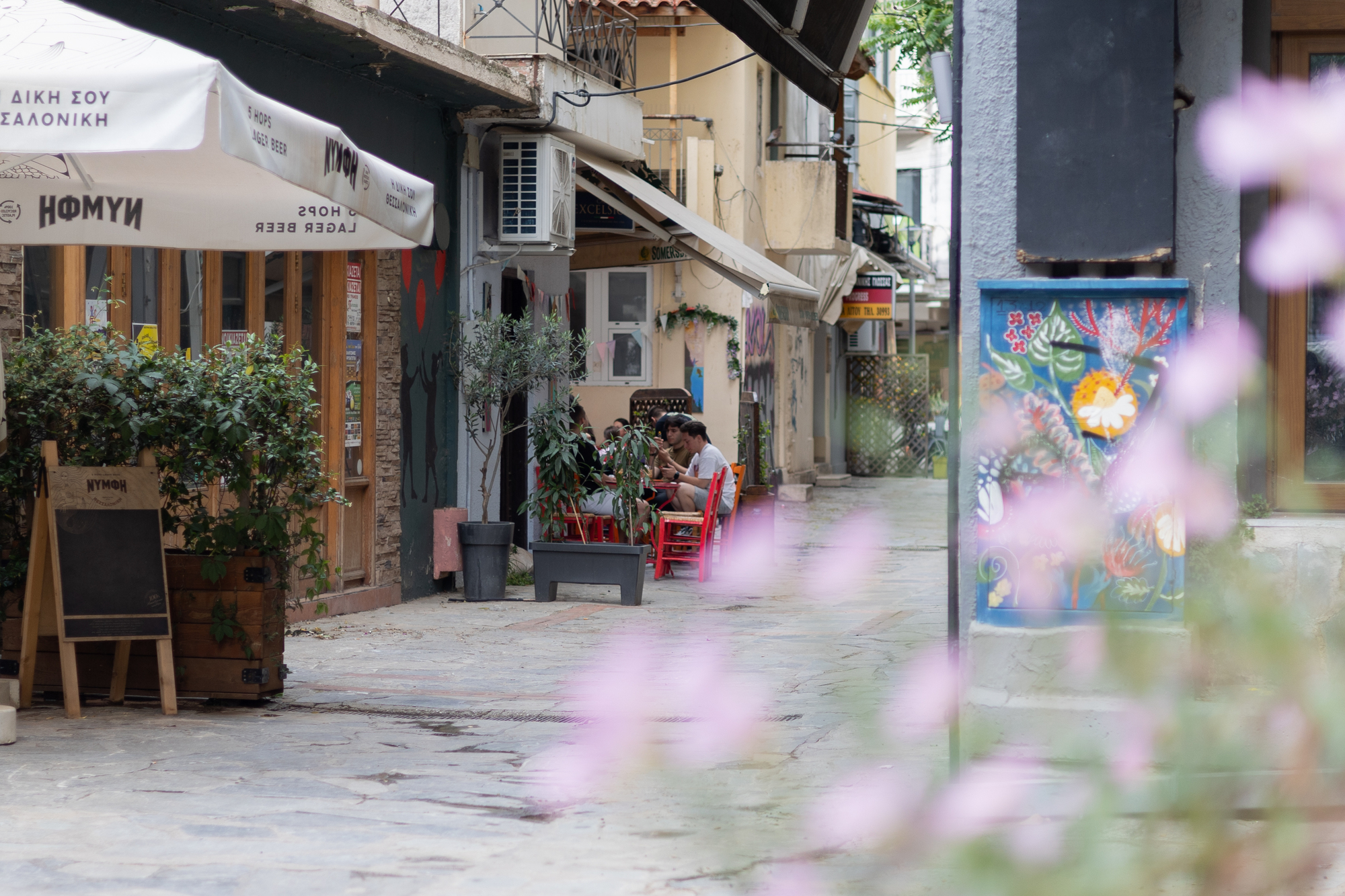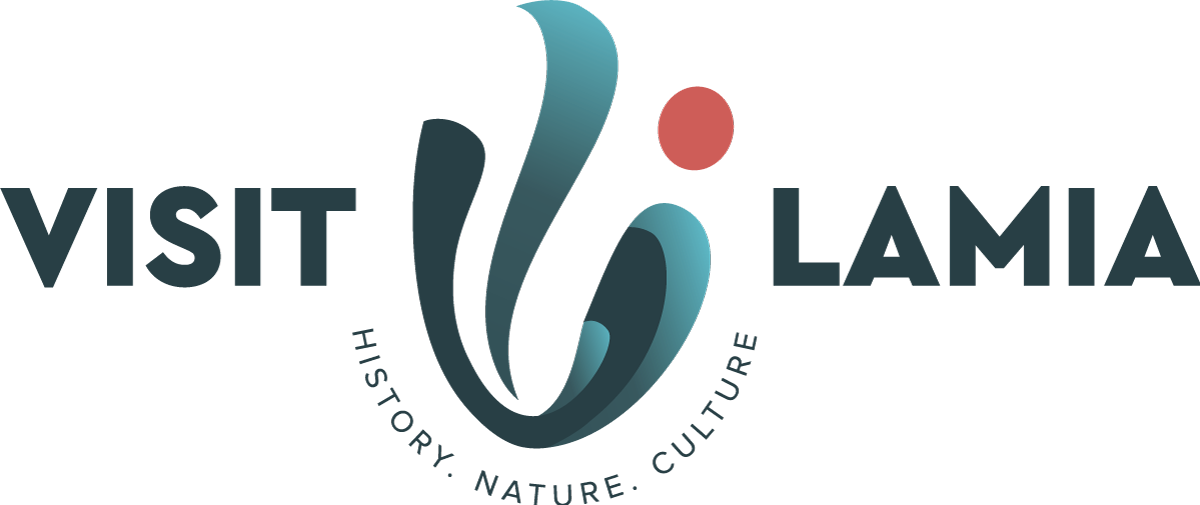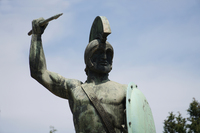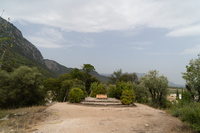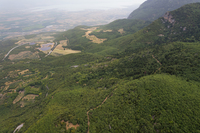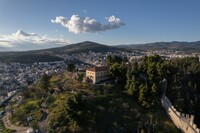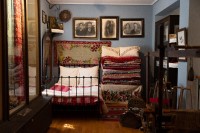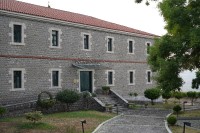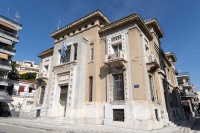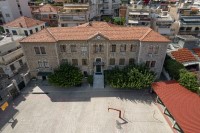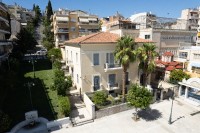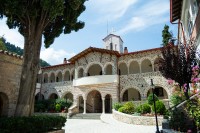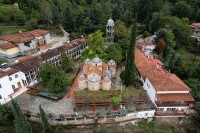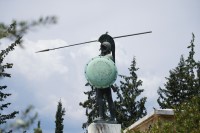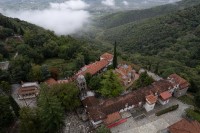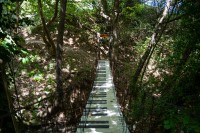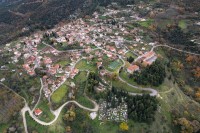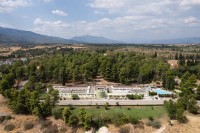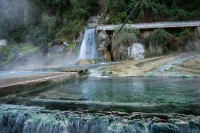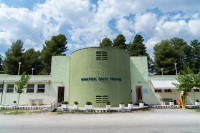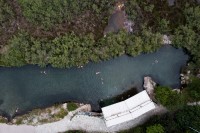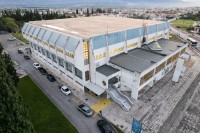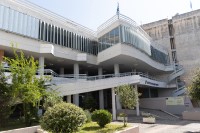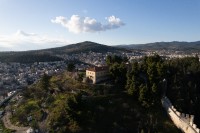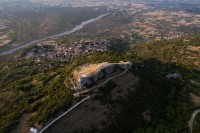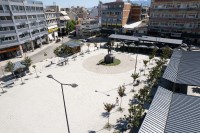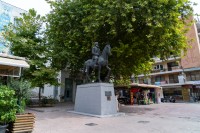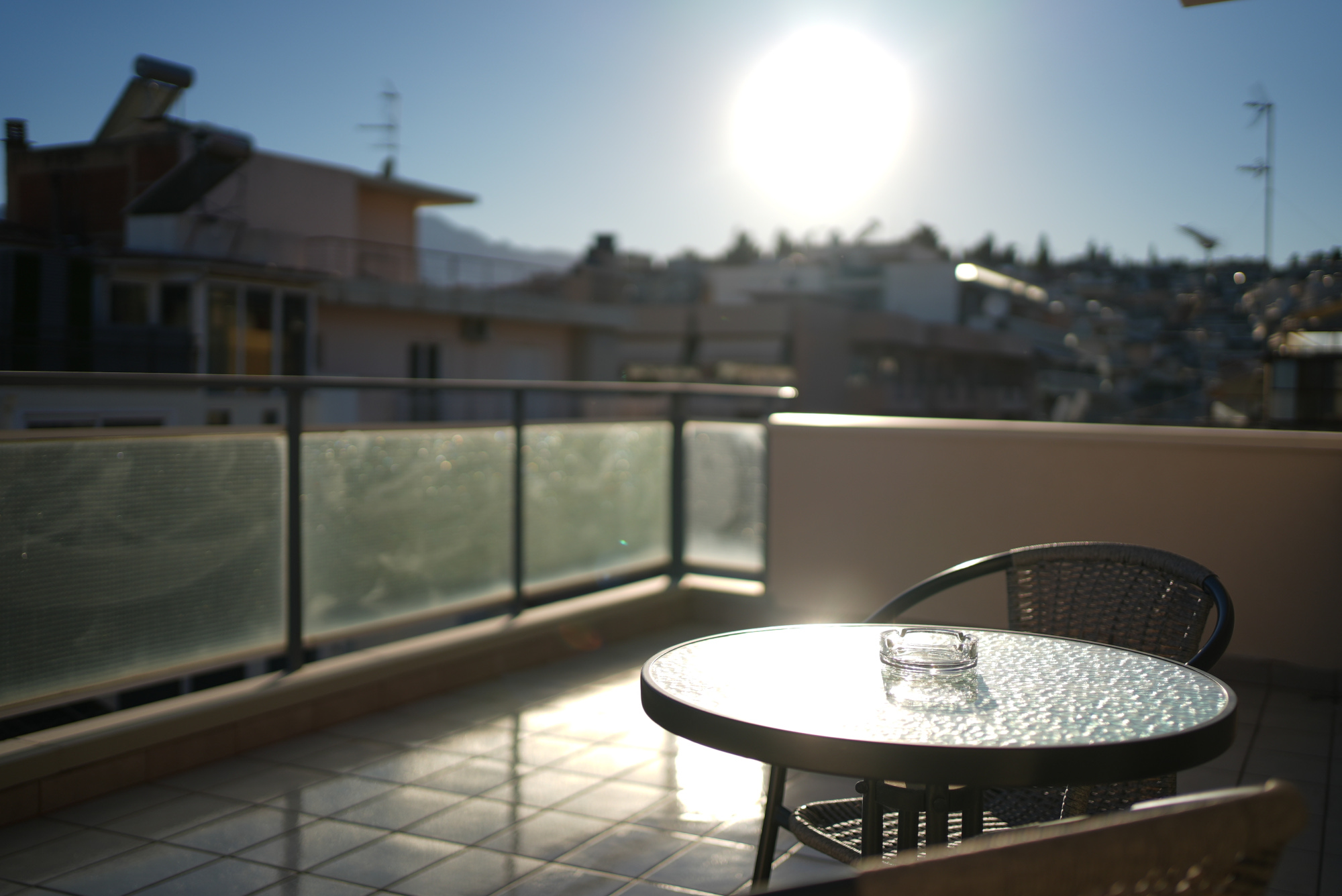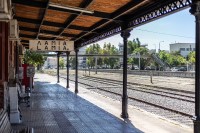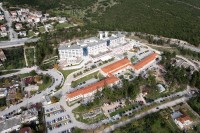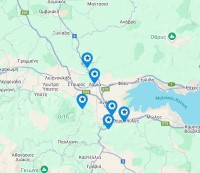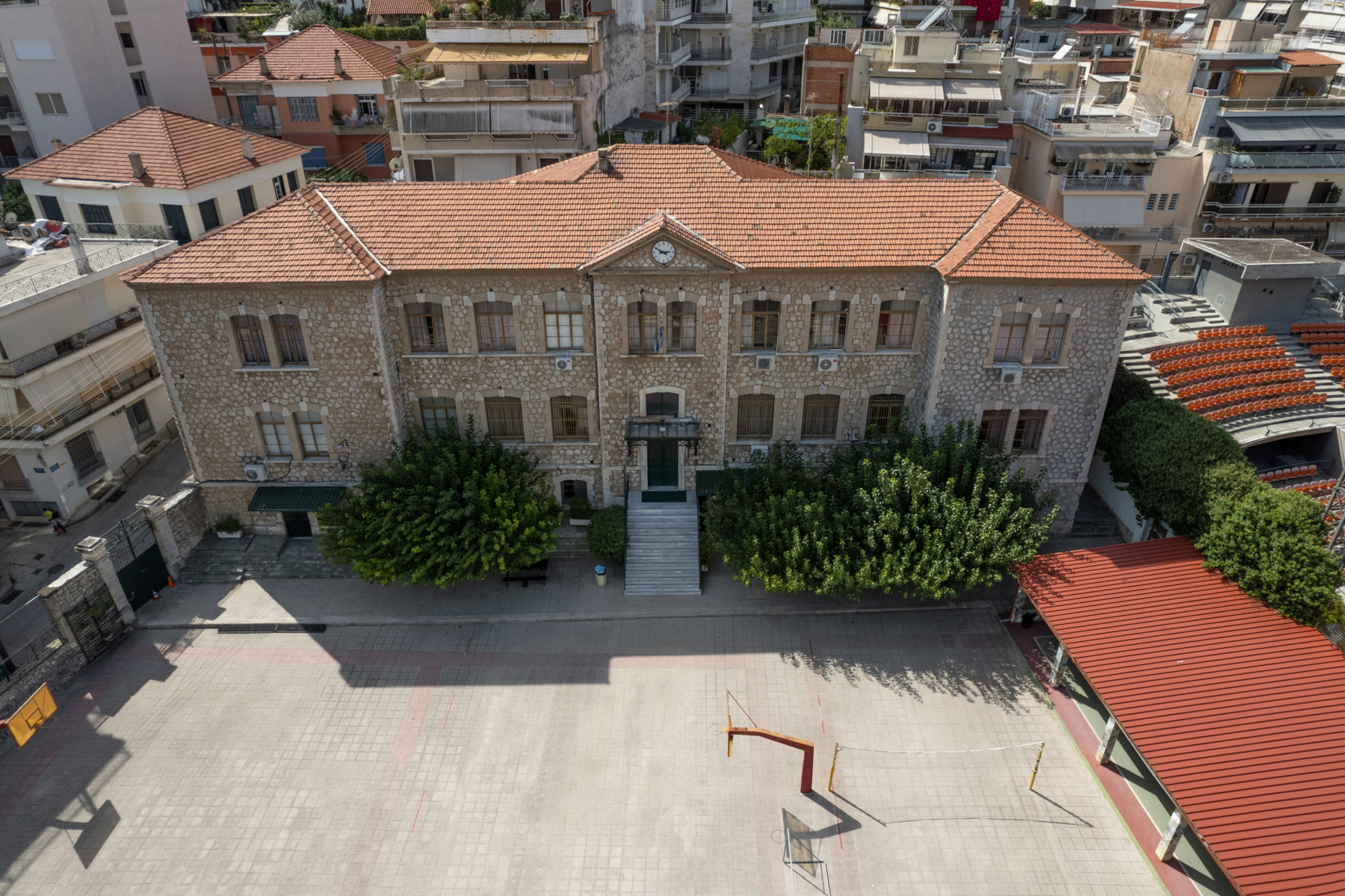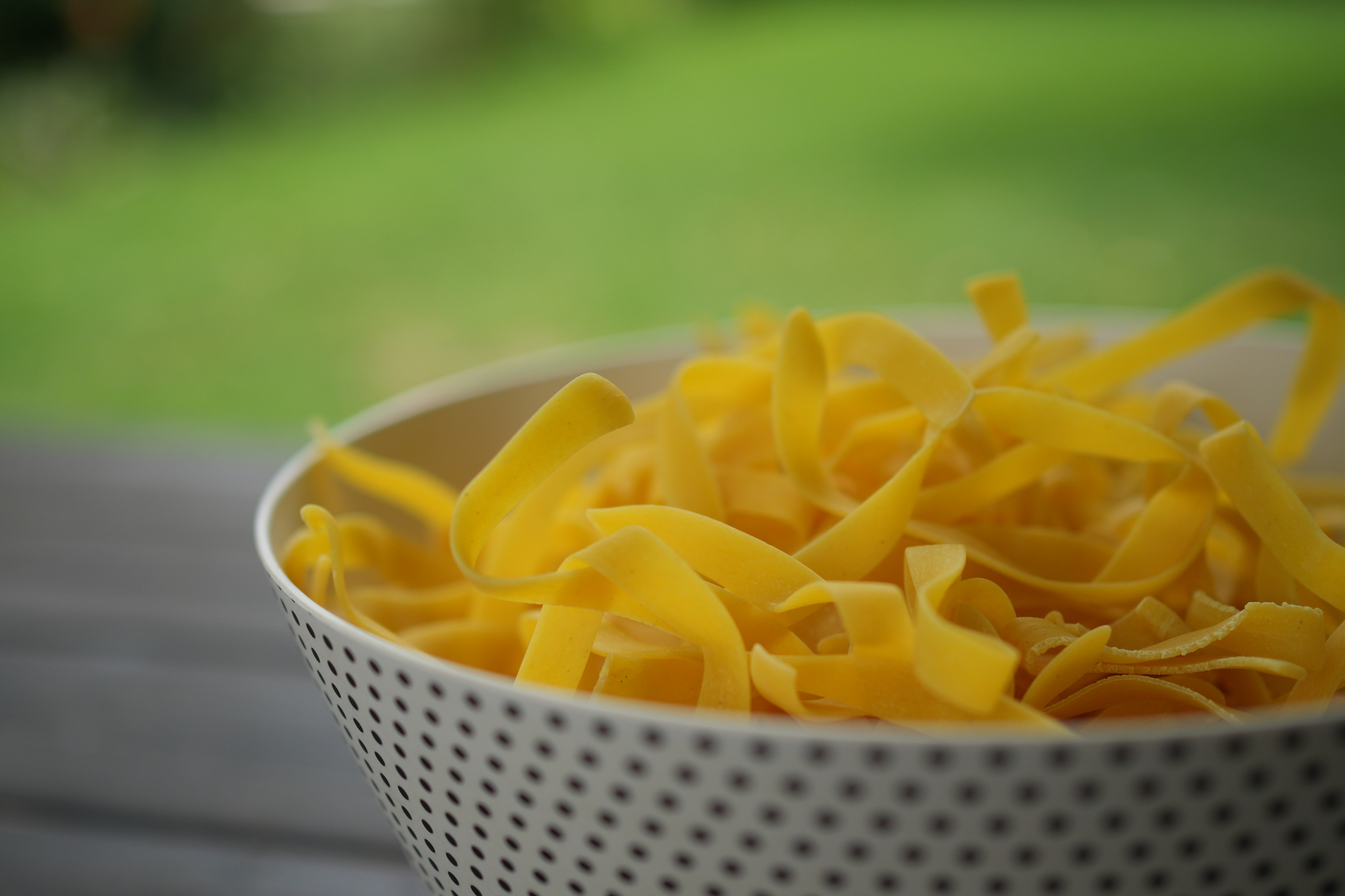No registered user events found.
Walks in Lamia

© Copyright DMS Lamia/ Municipality of Lamia
Terms of Use | Coocies Policy | Privacy Policy | Designed and created by Cosmote
Destinations
Main menu - Destinations
History
-
The statue of Leonidas – Thermopylae
Thermopylae is located just 20 minutes outside the city of Lamia and is a historical reference point for every visitor. The focal point of the area is the brass statue of King Leonidas wielding a spear and a shield. The form of King Leonidas was based on an ancient warrior unearthed by the British Archaeological School in 1920 and was attributed to King Leonidas. The statue is surrounded by two marble personified figures of river Evrotas and of the tallest mountain of Peloponnese, Taygetos. The Center of Historical Information of Thermopylae, the Monument of the 700 Thespians and the hot springs “hidden” by the seas passage, make a full tour of the area.
-
Kolonos hill
The path leading towards the low rising hill, takes its name by Kolonos and is a unique stop for every visitor. The passage ends at the very spot where the last standing Spartans and Thespians met a heroic death in the fight against the Persians.
-
Anopaia Atrapos
The secret passage of Anopaio Atrapos or the Efialtis Path runs 16 kilometers long starting from the Monastery of Damasta. In 480 BC during the battle of Thermopylae Efialtis revealed its location to Xerxes, the Persian king, thus leading the Persian troops to victory. The same path is chosen by plenty of trekkers who make their way down to the monument of Thermopylae, while the Mountain Race is annually held and attracts 300 runners from all over the world.
Culture
-
Archaeological Museum of Lamia
The Archaeological Museum of Lamia is housed in restored barracks that were constructed during the reign of King Otto. It is located within the designated archaeological site of the Lamia Castle. The museum's collection spans from the Neolithic era to Roman times, and it features a globally unique marble votive relief in its collection. In addition to its permanent exhibition, the museum hosts periodic exhibitions, numerous events, and educational programs. It also has a conference center. Every year, the people of Lamia gather in the museum's courtyard to celebrate the August full moon and participate in cultural events.
-
Folklore Museum of Fthiotida
The Folklore Museum of Fthiotidawas founded in 1984 and is located in the narrow streets of Laou Square, on Kaliva - Bakogiannipedestrian street, across from the tomb of AthanasiosDiakos. Its exhibits shed light on Greek society and economy of the pre-industrial era, and visitors can explore them on the first two floors, while the third floor houses a conference room and a library. Here, visitors can learn about local history, customs of past eras, and grasp the rich cultural heritage of the region. The Folklore Museum of Fthiotidais an integral part of the city's life, as it develops and organizes informative and entertaining activities.
-
Byzantine Museum of Phthiotis
20 kilometers away from the town of Lamia, in Ypati, one can visit the Byzantine Museum of Phthiotis. During the Byzantine period Phthiotis exhibited an immense progress in arts and craftsmanship. The museum unfolds into two floors, where findings from the early-Christian times can be seen. The view of the Spercheios valley attracts history enthusiasts from Greece and abroad.
Unique Buildings
-
Building of the Region of Central Greece - Eleftherias Square
It has been declared a listed monument and is located in the center of Lamia. It was built around 1925 as a branch of the National Bank of Greece in Lamia. During the Occupation from 1940 to 1944, it was requisitioned and initially served as the headquarters of the Italians and later as a German garrison. It survived the relentless bombing of Lamia by German airplanes on April 18, 1941. After the Liberation and until April 1945, the ELAS Headquarters were located there, and in 1946, the offices of the military administration of Lamia were accommodated. In 1950, the bank sold it to the Greek state, and it housed the Prefecture of Fthiotida and later the Region of Central Greece.
-
Stone High School of Lamia
As visitors head towards the Municipal Theater, their gaze is drawn to the imposing 6th High School of Lamia. This stone-built structure graces Ypsilantou Street and is considered the oldest school in the Central Greek region. Since 1979, the 6th High School of Lamia has been housed there, infusing life into the city center. Its distinctive architecture, proportions, and the unique clock adorning its pinnacle impress the visitors. In 1982, it was declared a historic monument of preservation. Outside of school hours, it hosts a multitude of cultural and scientific events, inviting both young and old to participate.
-
Bank of Greece Building
The preserved building on Diakou Square has hosted prominent families of Lamia, such as that of the hero of the 1821 Greek Revolution, Dyovouniotis, and the lawyer and significant Lamia politician, Makropoulos, before it was acquired and used by the Bank of Greece. The very location of the building is historical, as it is situated on a road that connected the ancient market with a section of the fortifications of ancient Lamia. This historical significance is reflected in the archaeological findings that one can admire, as they are now incorporated into the interior spaces of the building.
Temples and Monasteries
-
Holy Monastery of Damasta
At a distance of only 23 kilometers from Lamia and an altitude of 740 meters, we encounter the Holy Monastery of the Nativity of TheotokosDamasta. There are two possible interpretations related to the origin of the name, with one connecting it to the word "damastra," while the other refers to the origin of the icon of the Virgin Mary hosted in the monastery. Due to its privileged location, the monastery played a decisive role during the periods of the Greek Revolution and the German occupation. Since 1953, it has been functioning as a women's monastery with an active spiritual center. A visit to the monastery offers a unique experience of tranquility and relaxation on the northern mountain slopes of Mount Kallidromos.
-
Agathonos Monastery
The Monastery is located near Ypati, within the unique natural landscape of the Oeta National Park. It stands out for its magnificent church, dating back to the 16th and 17th centuries. The patron icon of PanagiaAgathonos is considered miraculous, and every year, a multitude of believers visit the Monastery to venerate it. The feast days are celebrated on August 6th and 15th. The Monastery has played a significant role in the historical events of the region, contributing valuable work to the struggles of the Greek people. Within this idyllic natural setting, the Monastery houses a Museum of Natural History and a wildlife breeding facility, where visitors can admire a unique habitat.
-
Metropolitan Cathedral of Phthiotis
Located in the heart of Freedom Square and based in Lamia, you can find the Metropolitan Cathedral of Phthiotis, which serves an area of 4,500 square kilometers and includes 7 municipalities. The Church of the Annunciation of the Theotokos captivates visitors with its imposing architecture, featuring the rhythm of a three-aisled basilica with a dome, its neoclassical characteristics in decoration, and its rich historical heritage. Inside, you'll discover magnificent wood carvings, impressive mosaic floors, and valuable archival material related to Lamia. Its ideal location allows for a visit to the magnificent temple and can be combined with a stroll through the shops and an exploration of the picturesque streets of the city.
Routes
-
Historical Triangle
The historical triangle formed between Thermopylae, Alamana and Gorgopotamos awaits visitors to narrate them fascinating stories that go back up to 25 centuries.
-
Strolling around the Historic Center
Lamia's history is rich and goes way back in time! Built at the foot of Mount Othrys, on green hills with buildings and neighborhoods full of traditional color with picturesque streets and flowery courtyards.
-
Religious Triangle
The city of Lamia is surrounded by many religious tourism destinations inviting pilgrims as well as nature lovers to come and explore the beautiful historic Monasteries of the area. The religious triangle formed between the Damasta, Agathonos and Antinitsa Monasteries offers unique experiences to travelers who decide to visit them.
Experiences
Main menu - Εμπειρίες
Nature
-
Pavliani
Nestled on the slopes of Mount Oeta, at an altitude of 1,040 meters, you will find the vibrant village of Pavliani. Upon entering, visitors encounter a monument honoring the fighters in the historic Battle of Pavliani, one of the most significant battles against the Italian conquerors. A characteristic part of the area is the park at the sources of the Asopos River, offering multiple excursion possibilities. Between Upper and Lower Pavliani, travelers can visit the Hydropower Museum complex, the stone-built Public School, and the National Park of Oeta. Enjoy Pavliani in every season of the year!
-
Ypati
Every corner of Ypati has a fascinating story to tell! It played a leading role in significant events from antiquity to the Roman, Byzantine, Catalan, Turkish periods, and even modern times, being a co-capital of Greece at one point. Explore its beautiful streets, learn about its heroic history from ancient times to the Holocaust suffered at the hands of the German occupiers in 1944. Seek the traces of the mythical Pharmakides along the enchanting trails where the Oiti Mountain Marathon takes place every year.
-
Loutra Ypatis Park
Located 19 kilometers from Lamia and in close proximity to the Liakokladi railway station, you will find the settlement of Ypatis. The area acquired its name from the thermal springs and was designed as a spa town in the late 19th century.
Wellness
-
Thermopylae Thermal Baths
Near the area of the famous Battle of Thermopylae in 480 B.C., where myths and history meet the modern world, lies the Thermopylae Thermal Baths. According to mythology, Hephaestus created these springs upon the request of the goddess Athena to heal the wounds of the demigod Hercules. It is said that these baths were also used by the soldiers of the Spartan king Leonidas to treat their injuries and rejuvenate their bodies. The thermal water of Thermopylae is believed to have therapeutic properties, especially for musculoskeletal disorders, rheumatoid arthritis, and respiratory system issues. The temperature of the water remains constant at 40°C where it springs. It is a place that is open and accessible to everyone.
-
Ypatis Thermal Springs
The Ypati Thermal Springs, situated 19 kilometers from Lamia, form a lush settlement nestled at the foot of Mount Oeta. The area took its name from the thermal baths designed in the late 19th century. The springs of these baths are renowned for their therapeutic properties, reaching a temperature of 33.5°C, which is considered ideal for circulatory system conditions. The advanced facilities of the Ypati hydrotherapy center attract bathers seeking a source of relaxation and well-being every year. Combine your exploration of the Ypati Thermal Springs with a walk in the verdant park of the area and a visit to the picturesque village of Ypati, which is just 5 kilometers away.
-
Thermal Springs of Kallidromo (Psoroneria)
Just 15 minutes outside the city of Lamia, one can come across a unique destination, known as the hot springs of “Psoroneria”. Its curative properties are well known since antiquity and mentioned by Herodotus and Hippokrates. The hot springs (33oC) invite visitors of every age to try their curative actions and lose themselves in the beauty of the surrounding nature. Since the legend of Hercules until today, the hot springs of Kallidromos offer a refreshing and unique experience to every visitor.
Sports
-
Municipal Sports Center "Athanasios Diakos"
On the outskirts of the city of Lamia, you will find the Municipal Stadium, which was built in 1952. Today, it has been renovated, and its capacity stands at 5,500 seats. It serves as the home ground for the historic football club P.A.S. Lamia, founded in 1964, while in the past, it was a free space for amateur sports activities for the citizens of Lamia. Many great athletes took their first steps in sports here, such as NikiBakogianni, the Silver Olympic Medalist at the 1996 Atlanta Olympics. A visit to the sports center can be combined with a walk in the uphill section of Lamia that leads to the city's castle!
-
Closed Gymnasium of Lamia "Chalkiopouleio"
The Closed Gymnasium of Lamia, known as "Chalkiopouleio," is a notable sports facility with a long history in Lamia and Phthiotida. It received its name from Miltiadis Chalkiopoulos, the donor of the land where it was constructed, and was built in the 1990s. Featuring a large indoor court suitable for various sports such as basketball, volleyball, and handball, as well as gymnasiums and multipurpose rooms, it belongs to the "Municipal Sports Center (DAK) of Lamia." The gymnasium plays a significant role in promoting sports and physical activity in the area. Moreover, it hosts sports and cultural events, connecting the local community with sports and culture.
-
Swimming Pool
The Municipal Open-Air Swimming Pool of Lamia is a place that combines health, recreation, and social activity. It is located across from Lamia City Hall and the Municipal Sports Center (Stadium) of the city. It is a destination that keeps the tradition of swimming and physical exercise alive, offering the local community a unique opportunity to enjoy the treasure of the aquatic element. Residents and visitors can enjoy swimming and training in the renovated space, while the telescopic cover and the fact that the pools are heated make the Swimming Pool ideal for use in every season and weather condition.
MICE
-
Pan-Hellenic Exhibition of Lamia
The Pan-Hellenic Exhibition of Lamia (P.E.L.) stands out as a premier commercial, cultural, and educational meeting center in Greece. It is one of the oldest exhibitions in Greece, attracting visitors and exhibitors every year. It features three covered exhibition spaces, each covering an area of 2,700 square meters, while its entire area occupies 167,000 square meters. P.E.L. organizes innovative commercial, cultural, and scientific activities, aiming to be an additional lever for the development of the region and constantly improve the services it offers to residents, exhibitors, and visitors.
-
Municipal Water and Sewerage Enterprise of Lamia
Water supply in the city of Lamia has always been a primary concern for its residents and local authorities. The first water supply network in the area was established in 1884, and following numerous water supply projects, Lamia acquired significant volumes of potable water. The establishment of the Municipal Water Supply and Sewerage Enterprise of Lamia (D.Ε.Υ.Α. Lamia) aims to ensure continuous water supply, proper management, and disposal of urban wastewater for all Municipal Departments of the city. The extensive distribution network spans 245,000 meters, and its services are located at the eastern entrance of the city, housed in a modern bioclimatic building since 2017.
-
Municipal Cultural Center of Lamia
It is located in close proximity to Parkou Square. On the ground floor, the Citizens' Service Center operates, and many associations and other entities are housed there. On the first floor is the Representation of the European Information Center Europe Direct, while on the second floor is the event hall of the Municipality of Lamia. The spacious hall with its excellent sound system and its ample foyer make it ideal for various activities and events. The third floor provides the opportunity for groups, clubs, and associations of the city to carry out their own actions for the benefit of society.
City Guide
Main menu - Οδηγός Πόλης
At a glance
Welcome to Lamia! A city with deep roots in history and rich culture. At a glance, you can discover all the hidden secrets that blend ancient tradition with modern life. From the city center and its four squares (Parkou, Diakou, Eleftherias, and Laou) to its impressive Castle, Lamiafascinates every visitor. From the Castle top, visitors can enjoy the stunning view reaching all the way tothe sea. The old town of Lamia, with its narrow streets and traditional houses, charges the atmosphere with so many myths and stories, making time stand still. Ascenting the picturesque steps of Laou Squareto the hill of AgiosLoukas will reward you with yet another unique view!
Explore the city in 2-3 days
All this cultural and natural wealth is what makes Lamia an unforgettable place full of interesting activities and discoveries and a city you will definitely want to come back to. We await you!
Gastronomy
The cuisine of Roumeli is mostly famous for its grilled dishes. However, in recent years, gastronomy in the city of Lamia has evolved significantly and is not limited to traditional dishes anymore. It now constitutes a combination of local flavors and products with influences from international cuisine.
Shopping
From the trade of traditional local products and art items, to the modern commercial stores on central streets of the city,Lamia offers a variety of options for shopping.
Local products
Lamia is distinguished for the variety and quality of its local products. Standing out, amogst these are: wine, cheese and dairy products, honey, sweet treats, agricultural products and meat.
Next to
Lamia is a destination with a rich cultural history and natural beauty. Its geographical location in the center of Greece gives it another significant advantage. The fact that it is very close to plenty other important destinations.
Squares
-
Parkou Square
Parkou Square is the largest square in Lamia. The names, both official and unofficial, that it has received over the years reflect the historical and social events of Lamia and Greece. A prominent feature of the square is the statue of the Evzone, created by sculptor NikolaosPerantinos. It was placed there to honor the Evzones of the 5/42 Battalion, based in Lamia, who played a distinguished role in the recent history of the country. Visitors quickly realize that this is the heart of the city, and as they observe the beautiful neoclassical buildings surrounding it, they get a taste of the grandeur of old Lamia.
-
Diakou Square
Diakou square is one of the four focal squares in Lamia. It is located under the hill of Saint Loukas and is dedicated to the hero of the Greek revolution, AthanasiosDiakos. The marblestatue all of the hero looms in the centre of the square and welcomes visitors. At the same time, the neoclassical wealth end the archaeological findings make it a meeting point for everyone while the stepsthere, lead the visitor to one of the most beautiful pathstowards the hill of Saint Loukas where one will enjoy a special view of the city.
-
Laou Square
In the heart of the city of Lamia lies LaouSquare, one of the four central squares. It acquired its name in January 1897 as a timeless meeting point for the people seeking work. The imposing plane trees that create a welcoming landscape are significant witnesses to the existence of underground streams in the area. At its center, stands the statue of Captain ArisVelouchiotis of the ELAS (Greek People's Liberation Army), surrounded by magnificent neoclassical buildings. The beautiful cobblestone alleys, famous grilled dishes, and traditional products form a unique path that leads to the exceptional view of Lamia Castle.
Accomondation
Lamia offers a wide variety of options in both large and smaller hotels, rental rooms, and modern accommodation facilities that will meet all your needs. The accommodations range from luxurious to more affordable, providing modern amenities and welcoming spaces, whether you're traveling alone, with your family, or with friends.
Information
Main menu - Πληροφορίες
Means of Public Transport
-
Transportation in the city
Lamia, as an important urban hub of central Greece, offers various means of transportation that serve the needs of residents and visitors alike.
-
Intercity Bus Service of Phtiotida
The Intercity Bus Service (KTEL) of Phthiotida constitutes a vital component of the public transportation sector and mobility in the broader region of Phthiotida and Central Greece. Its history dates back many years, symbolizing progress and development in the transportation sector of the area.
-
Railway Station
The Railway Station of Lamia is one of the most significant railway stations in Greece, not only due to its strategic position in the railway network but also because of its historical and architectural value. This station connects the city of Lamia with the rest of the country through the Lianokladi Station, which is also located in the Municipality of Lamia.
Hospital
The General Hospital of Lamia is one of the most important medical centers in the region of Phthiotida and the entire Central Greece. Its history dates back many years to the 19th century, during the Ottoman Empire. It was founded in 1946 in the area known as 'Taratsa,' located to the north of the city, as a monumental project led by Efstathios Malamidas, a prominent political figure in Lamia.
User Content
-
User general content
User General Content offers visitors the opportunity to share their own points of interest, services and useful information. Here users can post suggestions for local attractions, activities or businesses that stand out.
-
Local user products
In the section of Local User Products, the local products of the region are highlighted. Users have the opportunity to showcase products that they produce themselves or that they know from local producers, with an emphasis on traditional dishes, agricultural products and handicrafts that are directly linked to local culture.
-
User events
The User Events section allows users to share events organised in their region. Cultural, social and sporting events that deserve to be known to the general public find their place here.
For businesses
Smart forecasting, attraction, planning and sustainable management of Urban Tourism and Cultural Flows.
The Lamia Intelligent Platform for Urban Tourism and Cultural Flows Management operates as an integrated solution for a) analysis of large-scale tourism and cultural data for a deeper understanding and efficient forecasting of incoming tourist and cultural flows of visitors to the city and b) promotion and advertising of the city as a cultural and tourist destination through tools to support the city's businesses for high quality tourism services, tailored to the characteristics of incoming visitors.
Reward
Sign up today to the Rewards Program of the Municipality of Lamia and win unique privileges and gifts. The rewards program is ideal for those who love Lamia, travel and want to share all that our destination has to offer.



